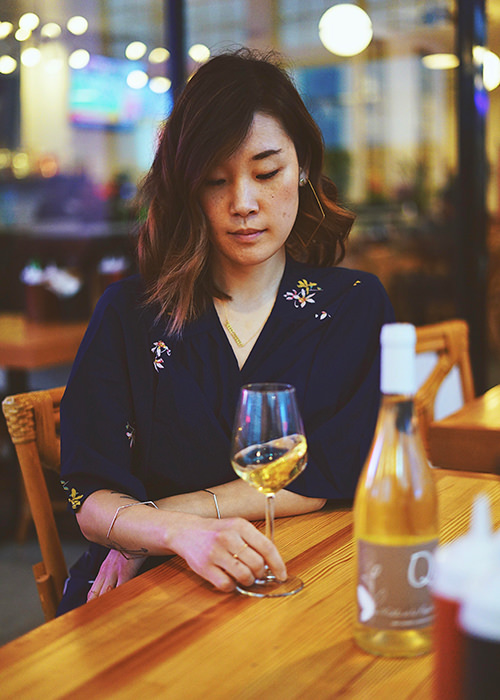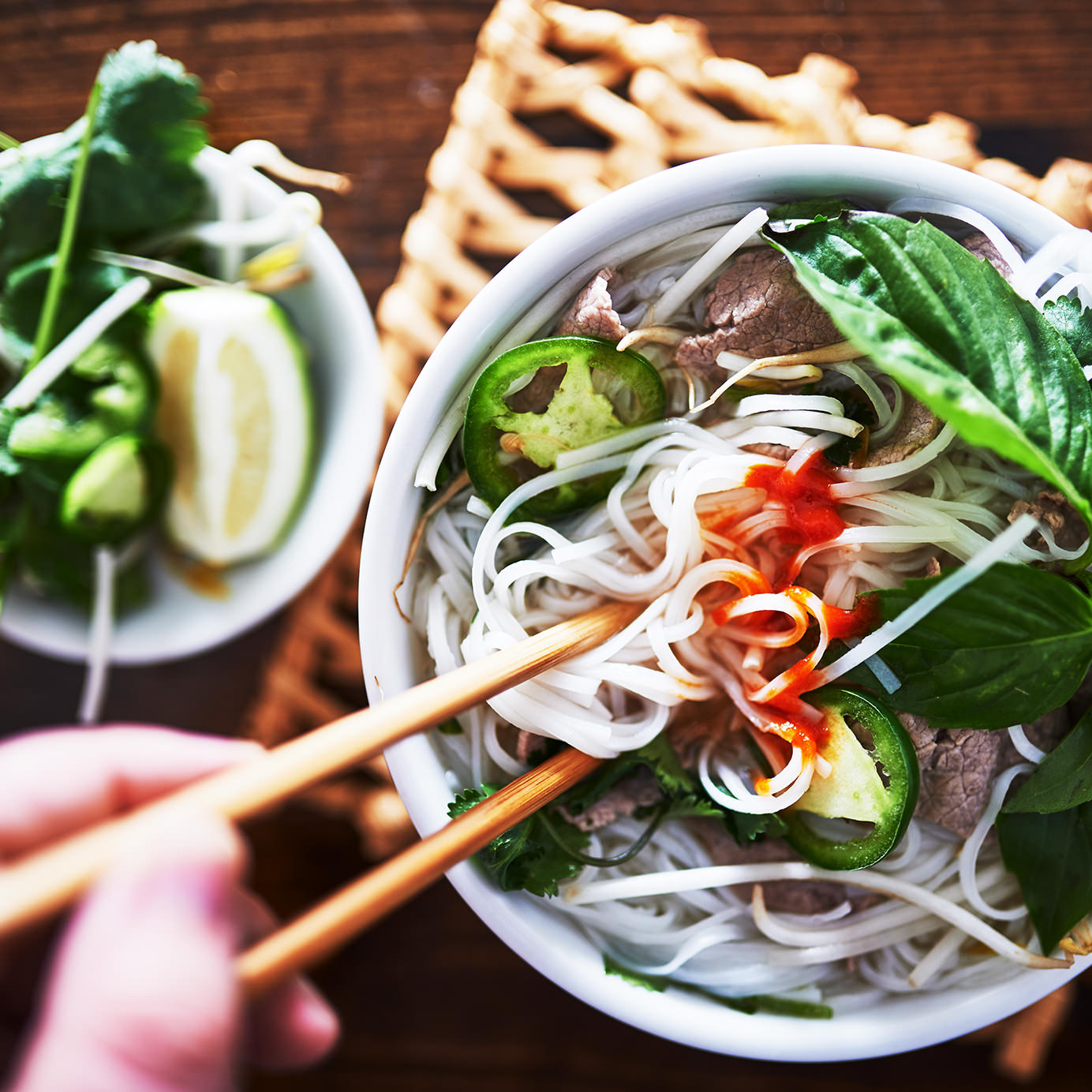With its robust immigrant communities and booming dining scene, a city like Seattle owes its residents a thoughtful wine list at all its restaurants. At least that’s how Suzi An sees it.
An is proprietor of Vita Uva, the first wine shop focused on natural and minimal-intervention wines in Seattle’s International District. The 65-square-foot retail shop is located inside Phở Bắc Súp Shop, the newest outpost of a hip local pho stop.
An created the wine list for the restaurant as well, playing upon her experience as former creative director of Seattle hot spots Salare and JuneBaby. For An, serving a curated selection of wine alongside Phở Bắc Súp Shop’s shrimp vermicelli bowls and herbaceous beef noodle soup just made sense.

“I wasn’t necessarily thinking about natural wine, I just wanted something that would pair with the sweet, spicy, and herbaceous flavors of Vietnamese cuisine,” she says. Part of her mission at Phở Bắc Súp Shop is changing perceptions of what gets paired with Asian dishes.
For both the restaurant and her bottle shop, An, who is Korean, gravitates to high-acid and low-alcohol wines, usually from low- or minimal-intervention producers. “I don’t want to mask any flavors,” she says of her food-friendly list. “I want each wine and each dish to be complementing one another, not competing.”
We asked An to give us a lesson in the types of wine that pair best with Vietnamese food.
If You Go Heavy on the Sriracha, Get an Off-Dry Riesling
The residual sugar in off-dry Riesling complements the spiciness of the food. “It’s kind of like having a sweet and sour together,” An says. “It cools down a bit of the heat without taking away the flavor of the spice, so it’s not overwhelming in your mouth, but it’s still enjoyable.” Rieslings have a good amount of acid, which cuts through the richness of pork or other fatty meats. We suggest this $20 option with refreshingly tart peach and nectarine notes to quench your thirst.
Seafood, Meet Txakoli
This style hails from Spanish Basque country, where guzzling wine with briny white anchovies and charred prawns is a fine idea for an afternoon. An likes Ulibarri Bizkaiko Txakolina, a high- acid wine with a bit effervescence. “It’s been aged in old barrels, which gives such great structure to something that’s normally a table wine,” she says. We think it’d be delicious with shrimp summer rolls or catfish vermicelli.
Grilled Lemongrass Pork Needs Lambrusco
While drinking a red with Vietnamese food might not be the first thing that comes to mind, a dry Lambrusco with just a touch of residual sugar highlights the pork’s sweetness. An put this bottle on the Súp Shop’s wine list because its low tannins and cleansing effervescence wash away the rich flavors of crispy fried spring rolls or banh mi. Stay away from ones that taste like sparkling grape soda and ask your favorite wine shop for a Lambrusco that’s got some tartness to it.
Amplify Aromatics with Savignôn Rosso
Phở is celebrated for its intoxicating bouquet of star anise, fennel, clove, and cinnamon woven together in a steamy, satisfying broth. Pair like with like and pick up a bottle of Savignôn Rosso, like Ancarani Centesimino, with hints of pomegranate and rose that play well with the fragrant ingredients. An favors wines with complex floral notes because they stand up to hearty pork and beef dishes.
Complement Basil and Cilantro with Pinot Noir
Whether you’re tucking into a jalapeno-laced banh mi or a sweat-inducing bowl of curry, herbs — and lots of them — are a given in Vietnamese cuisine. “Lighter reds go really well with the food because they’re not too heavy and they don’t overpower any of the flavors,” An says. She recommends a Pinot Noir that has a little bit going on like this Burgundy-style one or this Loire Valley bottle, which has a pleasant minerality with a bracing cherry finish.
